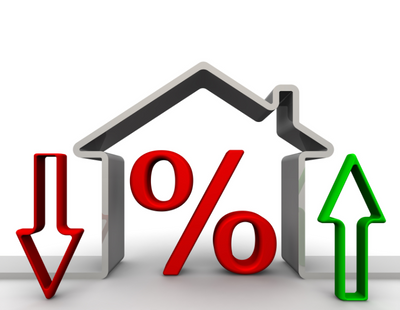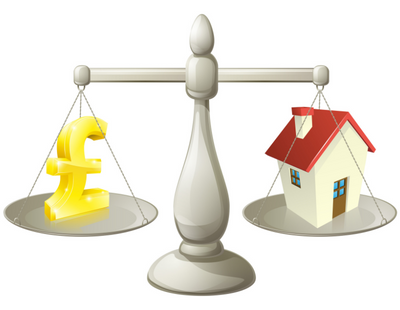
Another interest rate hike could further dampen property market activity, research suggests.
It comes as new analysis shows the average number of monthly transactions across the UK have dipped by a quarter since interest rates first started to climb in December 2021 - rising to a reduction of 40% in the worst hit areas of the market.
Property information pack provider Moverly analysed property transaction levels since December 2021 and how the UK property market has performed compared with the same time period prior to the Bank of England’s first interest rate hike.
The research shows that since the Bank of England started hiking interest rates in December 2021, an average of 72,785 have been sold each month across the UK market.
This is based on the latest available Land Registry data for December 2021 to November 2022.
Over the same time period prior to this first interest rate rise, December 2020 to November 2021, an average of 96,732 homes were sold on a monthly basis. This means that since interest rates started to rise, there have been 23,946 fewer homes sold on a monthly basis across the UK property market, a drop of 24.8, according to the research.
Regionally, the South East has seen the largest decline, with the average number of homes sold each month falling by 30.2% between December 2021 and November 2022.
Scotland has seen the smallest reduction, although there has still been a drop of 10.6%.
At local authority level, Mid Suffolk has seen the most drastic reduction in market activity since interest rates started to climb.
The average number of monthly transactions seen across the Mid Suffolk property market has dipped by 40.1% since December 2021.
Just two areas of the UK market have avoided a reduction in transactions, with sales in up 2.4% and Clackmannanshire registering a 1% rise.
Moverly co-founder Ed Molyneux said: “There’s no doubt that the market has started to cool since interest rates began to increase and we’ve seen a considerable reduction in buyer activity across almost every area of the UK market.
“However, it’s rather telling that the most inflated regions of the property market have been worst affected, while Scotland has seen a far more measured reduction.
“This is down to the fact that buyers are contractually obliged to follow through with a property purchase far earlier in the transaction timeline north of the Scottish border. So the increasing cost of borrowing hasn’t caused the same level of market instability as it has in the likes of the South East, where buyers have struggled to secure a mortgage as rates have climbed.”
| Table shows the change in the average number of monthly transactions seen since the first interest rate hike in Dec 21 versus the same time period prior |
|
| |
|
Location |
Total sales since prior to first interest rate inc (Dec 20 - Nov 21) |
Average monthly sales prior to first interest rate inc (Dec 20 - Nov 21) |
Total sales since first interest rate inc (Dec 21 - Nov 22) |
Average monthly sales since first interest rate inc (Dec 21 - Nov 22) |
Difference per month n |
Difference per month % |
|
| |
|
South East |
179,330 |
14,944 |
125,201 |
10,433 |
-4,511 |
-30.2% |
|
| |
|
South West |
114,778 |
9,565 |
80,418 |
6,702 |
-2,863 |
-29.9% |
|
| |
|
East of England |
119,073 |
9,923 |
83,560 |
6,963 |
-2,959 |
-29.8% |
|
| |
|
London |
110,444 |
9,204 |
81,009 |
6,751 |
-2,453 |
-26.7% |
|
| |
|
East Midlands |
85,678 |
7,140 |
63,709 |
5,309 |
-1,831 |
-25.6% |
|
| |
|
West Midlands Region |
90,720 |
7,560 |
67,866 |
5,656 |
-1,905 |
-25.2% |
|
| |
|
Yorkshire and The Humber |
93,040 |
7,753 |
71,114 |
5,926 |
-1,827 |
-23.6% |
|
| |
|
North West |
125,225 |
10,435 |
96,310 |
8,026 |
-2,410 |
-23.1% |
|
| |
|
Wales |
50,962 |
4,247 |
40,276 |
3,356 |
-891 |
-21.0% |
|
| |
|
Northern Ireland |
31,281 |
2,607 |
24,776 |
2,065 |
-542 |
-20.8% |
|
| |
|
North East |
44,104 |
3,675 |
35,369 |
2,947 |
-728 |
-19.8% |
|
| |
|
Scotland |
116,143 |
9,679 |
103,815 |
8,651 |
-1,027 |
-10.6% |
|
| |
|
England |
962,392 |
80,199 |
704,556 |
58,713 |
-21,486 |
-26.8% |
|
| |
|
United Kingdom |
1,160,778 |
96,732 |
873,423 |
72,785 |
-23,946 |
-24.8% |




























Join the conversation
Jump to latest comment and add your reply
This doesn’t mention the fact that 2021 sales were bloated by stamp duty holidays and post Covid, post Brexit backlog of demand and supply. Statisticians and economists really should look at things more broadly and take into account ALL affecting details rather than using them to prove a theory by ignoring everything else. Really a useless set of stats.
Please login to comment